The Influence of Surface Preparation of the Steel during the Renovation of the Car Body on Its Corrosion Resistance
Abstract
:1. Introduction
2. Materials and Methods
2.1. Samples Preparation, Coating Thickness and Surface Parameters Measurement
- for varnish coat < 100 μm: 1% ± 1.5 μm,
- for varnish coat 100..1200 μm: 1 to 3% ± 1 μm.
- sandpaper P80 and the electric oscillating machine MetaboSXE 425 TurboTec (P80 marking, Metabo, Nurtingen, Germany),
- glass bead blasting,
- abrasive blasting with the use of plastic granules Type II (UREA) (named granules),
- disc blaze rapid stripping,
- soda blasting (named soda).
2.2. Test in Salt Sprey Chamber
3. Results
3.1. Coating Thickness with Lacquer
3.2. Coating Thickenss without Varnish Layer
3.3. Test of Sample Surface
3.4. Test in Salt Spray Chamber
4. Conclusions
- The type of varnish layer made in factory conditions (pearlescent, metallic, acrylic) does not significantly affect the thickness and distribution of the zinc layer which during the vehicle body renovating process depends on the varnish layer removal method;
- Among the varnish removal methods used at the research stage, soda blasting and abrasive blasting with plastic granules are the least invasive to the zinc coating that protects steel against corrosion;
- The distribution of the zinc coating thickness for the prepared samples varied due to the nature of the varnish removal methods;
- Accelerated tests in a salt spray chamber confirmed the effectiveness of corrosion protection of samples in which the varnish was removed using the soda blasting and for abrasive blasting with plastic granules, no corrosion places were found on the samples;
- The standard method of removing the varnish layer in car body repair workshops (the use of sandpaper) causes a significant minimization of the zinc layer thickness, which also means that the corrosion resistance of the sheet is low. The degree of corrosion of the surface in the salt spray test was determined in accordance with the standard on Ri 5.
- Removing the varnish layer using various methods (e.g., as proposed in the article), then applying a primer and testing the degree of corrosion of a car body sheet in a salt spray chamber with a primer coating applied;
- Evaluation of the adhesion of the primer coating applied to the surface of a car body sheet prepared with various methods used in the tests presented in this article.
Author Contributions
Funding
Institutional Review Board Statement
Informed Consent Statement
Data Availability Statement
Conflicts of Interest
References
- Mayyas, A.; Qattawi, A.; Omar, M.; Shan, D. Design for sustainability in automotive industry: A comprehensive review. Renew. Sustain. Energy 2012, 16, 1845–1862. [Google Scholar] [CrossRef]
- Bouaziz, O.; Zurob, H.; Huang, M. Driving force and logic of development of advanced high strength steels for automotive applications. Steel Res. Int. 2013, 84, 937–947. [Google Scholar] [CrossRef]
- Lijewski, P.; Merkisz, J.; Fuc, P.; Ziolkowski, A.; Rymaniak, L.; Kusiak, W. Fuel consumption and exhaust emissions in the process of mechanized timber extraction and transport. Eur. J. For. Res. 2017, 136, 153–160. [Google Scholar] [CrossRef] [Green Version]
- Wargula, L.; Kukla, M.; Lijewski, P.; Dobrzynski, M.; Markiewicz, F. Impact of Compressed Natural Gas (CNG) Fuel Systems in Small Engine Wood Chippers on Exhaust Emissions and Fuel Consumption. Energies 2020, 13, 6709. [Google Scholar] [CrossRef]
- Li, Y.; Lin, Z.; Jiand, A.; Chen, G. Use of high strength steel sheet for lightweight and crashworthy car body. Mater. Des. 2003, 24, 177–182. [Google Scholar] [CrossRef]
- Hara, D.; Ozgen, G.O. Investigation of weight reduction of automotive body structures with the use of sandwich materials. 6th Transport Research Arena April 18–21, 2016. Transp. Res. Procedia 2016, 14, 1013–1020. [Google Scholar] [CrossRef] [Green Version]
- Gonzalez-Ciordia, B.; Fernandez, B.; Artola, G.; Muro, M.; Sanz, A.; Lopez de Lacalle, L.N. Failure-Analysis Based Redesign of Furnace Conveyor System Components: A Case Study. Metals 2019, 9, 816. [Google Scholar] [CrossRef] [Green Version]
- Fernandez, B.; Gonzalez, B.; Artola, G.; Lopez de Lacalle, L.N. A Quick Cycle Time Sensitivity Analysis of Boron Steel Hot Stamping. Metals 2019, 9, 235. [Google Scholar] [CrossRef] [Green Version]
- Tafreshi, M.; Allahkaram, S.R.; Farhangi, H. Comparative study on structure, corrosion properties and tribological behavior of pure Zn and different Zn-Ni alloy coatings. Mater. Chem. Phys. 2016, 183, 263–272. [Google Scholar] [CrossRef]
- Louda, P. Applications of thin coatings in automotive industry. J. Achiev. Mater. Manuf. Eng. 2007, 24, 51–56. [Google Scholar]
- Panagopoulos, C.N.; Lagaris, D.A.; Vatista, P.C. Adhesion and corrosion behaviour of Zn–Co electrodeposits on mild steel. Mater. Chem. Phys. 2011, 126, 398–403. [Google Scholar] [CrossRef]
- Song, G.M.; Sloof, W.G. Effect of alloying element segregation on the work of adhesion of metallic coating on metallic substrate: Application to zinc coatings on steel substrates. Surf. Coat. Technol. 2011, 205, 4632–4639. [Google Scholar] [CrossRef]
- Akafuah, N.K.; Peezesh, S.; Salaimeh, A.; Patrick, G.; Lawler, K.; Saito, K. Evolution of the Automotive Body Coating Process—A Review. Coatings 2016, 6, 24. [Google Scholar] [CrossRef] [Green Version]
- Mahajan, S.M.; Varade Mayur, A.; Mahajan Pratiksha, N.; Patil Sneha, V. Review on Automotive Body Coating Process. Int. J. Eng. Manag. Res. 2019, 9, 103–106. [Google Scholar] [CrossRef]
- Kurebwa, J.; Mushiri, T. A Study of Damage Patterns on Passenger Cars Involved in Road Traffic Accidents. J. Robot. 2019, 1–12. [Google Scholar] [CrossRef]
- Sriraman, K.R.; Brahimi, S.; Szpunar, J.A.; Osborne, J.H.; Yue, S. Characterization of corrosion resistance of electrodeposited Zn-Ni Zn and Cd coatings. Electrochim. Acta 2013, 105, 314–323. [Google Scholar] [CrossRef]
- Meng, Y.; Liu, L.; Zhang, D.; Dong, C.; Yan, Y.; Volinsky, A.A.; Wang, L.-N. Initial formation of corrosion products on pure zinc in saline solution. Bioact. Mater. 2019, 4, 87–96. [Google Scholar] [CrossRef] [PubMed]
- Prosek, T.; Thierry, D.; Taxen, C.; Maixner, J. Effect of cations on corrosion of zinc and carbon steel covered with chloride deposits under atmospheric conditions. Corros. Sci. 2007, 49, 2676–2693. [Google Scholar] [CrossRef]
- Amirudin, A.; Thierry, D. Corrosion mechanisms of phosphated zinc layers on steel as substrates for automotive coatings. Prog. Org. Coat. 2016, 28, 59–76. [Google Scholar] [CrossRef]
- Fujita, S.; Mizuno, D. Corrosion and corrosion test methods of zinc coated steel sheets on automobiles. Corros. Sci. 2007, 49, 211–219. [Google Scholar] [CrossRef]
- Rendahl, B. Paper No. 741, Corrosion 98; NACE International: Houston, TX, USA, 1995. [Google Scholar]
- Balasubramanian, J.; Lalwani, R.; Kumar, V. Mitigation for Edge Corrosion Protection for Automotive Bodies. SAE Int. 2019. [Google Scholar] [CrossRef]
- El-Aziz, A.M.; Sharaf, W.; Drechsel, J.; Exner, H. Mechanical and corrosion behaviour of hot stamped 22MnB5/Usibor 1500 steel alloy Yb: YAG continuous fiber laser weldments. Ochrona przed Korozja 2014, 7, 242. [Google Scholar]
- Hong, K.M.; Shin, Y.C. Prospects of laser welding technology in the automotive industry: A review. J. Mater. Process. Technol. 2017, 245, 46–69. [Google Scholar] [CrossRef]
- Dosdat, L.; Petitjean, J.; Vietoris, T.; Clauzeau, O. Corrosion resistance of different metallic coatings on press-hardened steels for automotive. Steel Res. Int. 2011, 82, 726–733. [Google Scholar]
- Fan, D.W.; De Cooman, B.C. State-of-the-Knowledge on Coating Systems for Hot Stamped Parts. Steel Res. Int. 2012, 83, 412–433. [Google Scholar] [CrossRef]
- PN-EN ISO 9227:2012; Polski Komitet Normalizacyjny: Warsaw, Poland, 2014. Available online: https://sklep.pkn.pl/pn-en-iso-9227-2012p.html (accessed on 25 March 2021).
- PN-EN ISO 4628-3:2016-03; Polski Komitet Normalizacyjny: Warsaw, Poland, 2016. Available online: https://sklep.pkn.pl/pn-en-iso-4628-3-2016-03e.html (accessed on 25 March 2021).
- ISO 8501-1:2007(en) Preparation of steel substrates before application of paints and related products—Visual assessment of surface cleanliness — Part 1: Rust grades and preparation grades of uncoated steel substrates and of steel substrates after overall removal of previous coatings; International Organization for Standardization (ISO): Geneva, Switzerland. 2007. Available online: https://www.iso.org/obp/ui/#iso:std:iso:8501:-1:ed-2:v1:en (accessed on 25 March 2021).
- Zieba-Palus, J. Examination of the variation of chemical composition and structure of paint within a car body by FT-IR and Raman spectroscopies. J. Mol. Struct. 2020, 1219, 128558. [Google Scholar] [CrossRef]
- PN-EN ISO 4628-1:2004; Polski Komitet Normalizacyjny: Warsaw, Poland, 2004. Available online: https://sklep.pkn.pl/pn-en-iso-4628-1-2004e.html (accessed on 25 March 2021).
- Prosek, T.; Nazarov, A.; Goodwin, F.; Serak, J.; Thierry, D. Improving corrosion stability of Zn-Al-Mg by alloying for protection of car bodies. Surf. Coat. Technol. 2016, 306, 439–447. [Google Scholar] [CrossRef]
- Prosek, T.; Nazarov, A.; Xue, H.B.; Lamaka, S.; Thierry, D. Role of steel and zinc coating thickness in cut edge corrosion of coilcoated materials in atmospheric weathering conditions; Part 1: Laboratory study. Prog. Org. Coat. 2016, 99, 356–364. [Google Scholar] [CrossRef]
- Jones, R.; Matthews, N.; Peng, D.; Phan, N.; Nguyen, T. Chapter Sixteen—Applications of SPD to Enhance the Structural Integrity of Corroded Airframes. Aircr. Sustain. Repair 2018, 863–905. [Google Scholar] [CrossRef]
- Szklarska-Smialowska, Z. Pitting Corrosion of Metals; NACE: Houston, TX, USA, 1986. [Google Scholar]
- Choi, M.; Chung, B.; Choi, J. Design Considerations to Enhance Perforation Corrosion and Life Prediction of Automotive Body Panel. Corros. Sci. Technol. 2003, 2, 247–251. [Google Scholar]

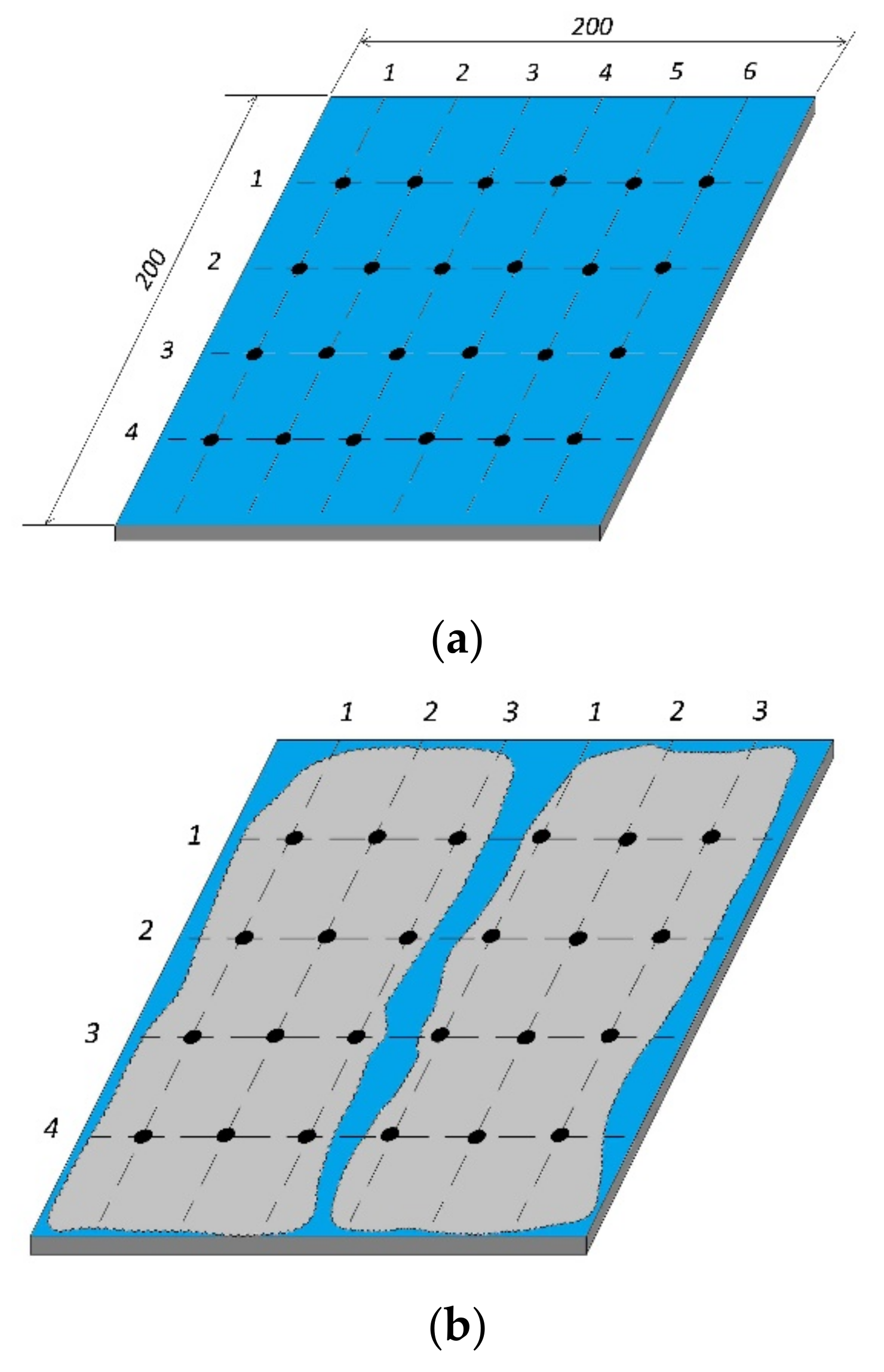
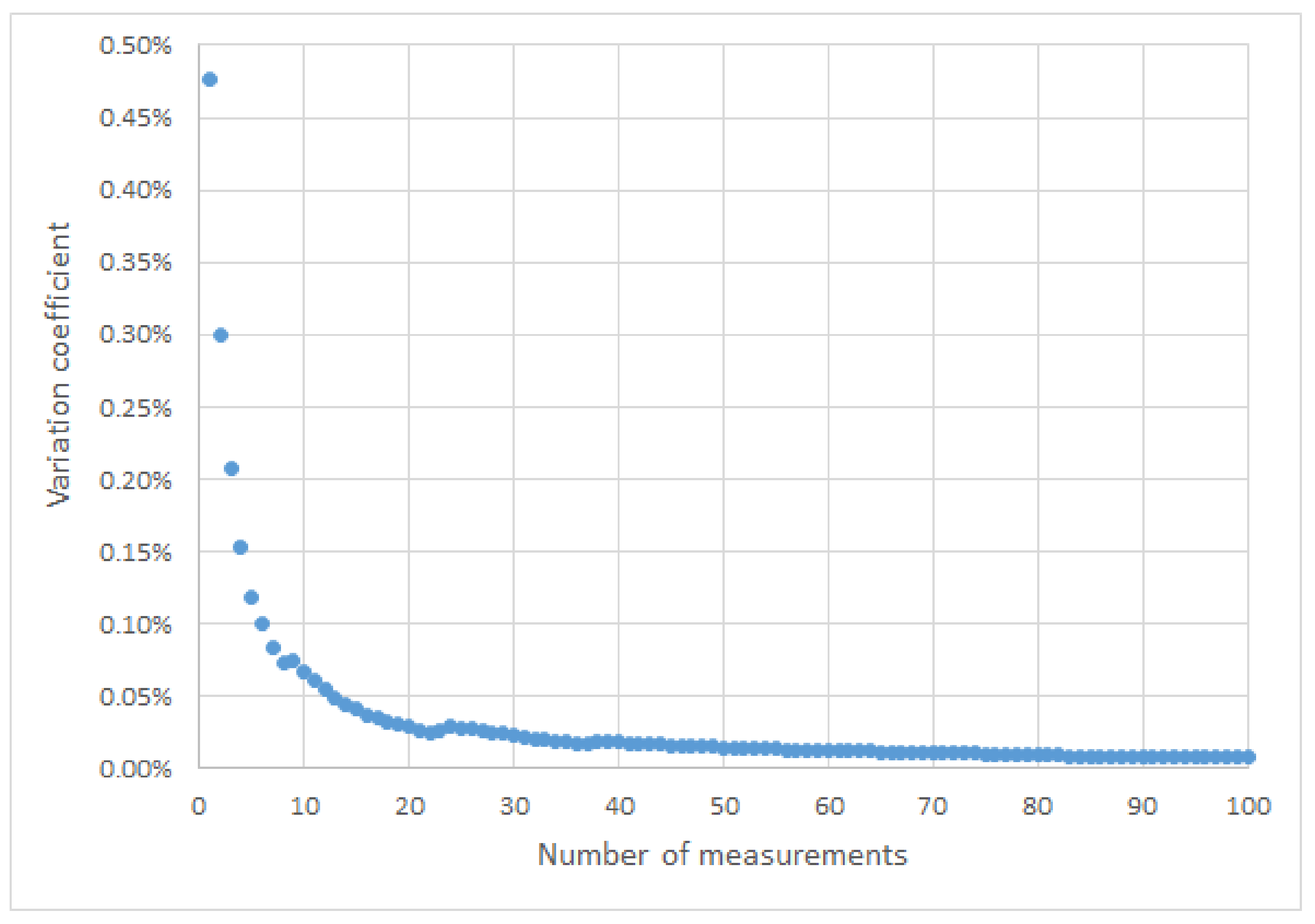
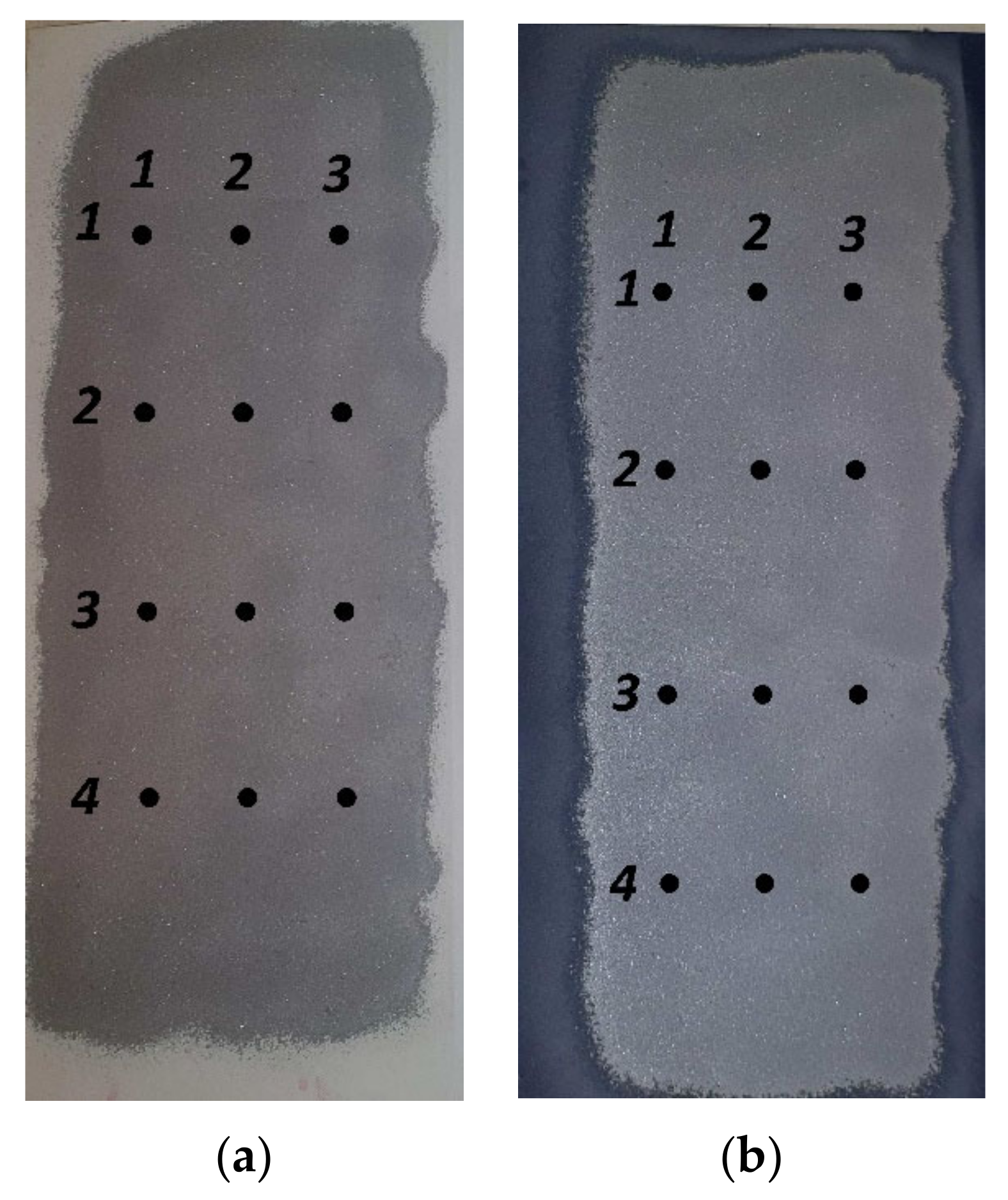
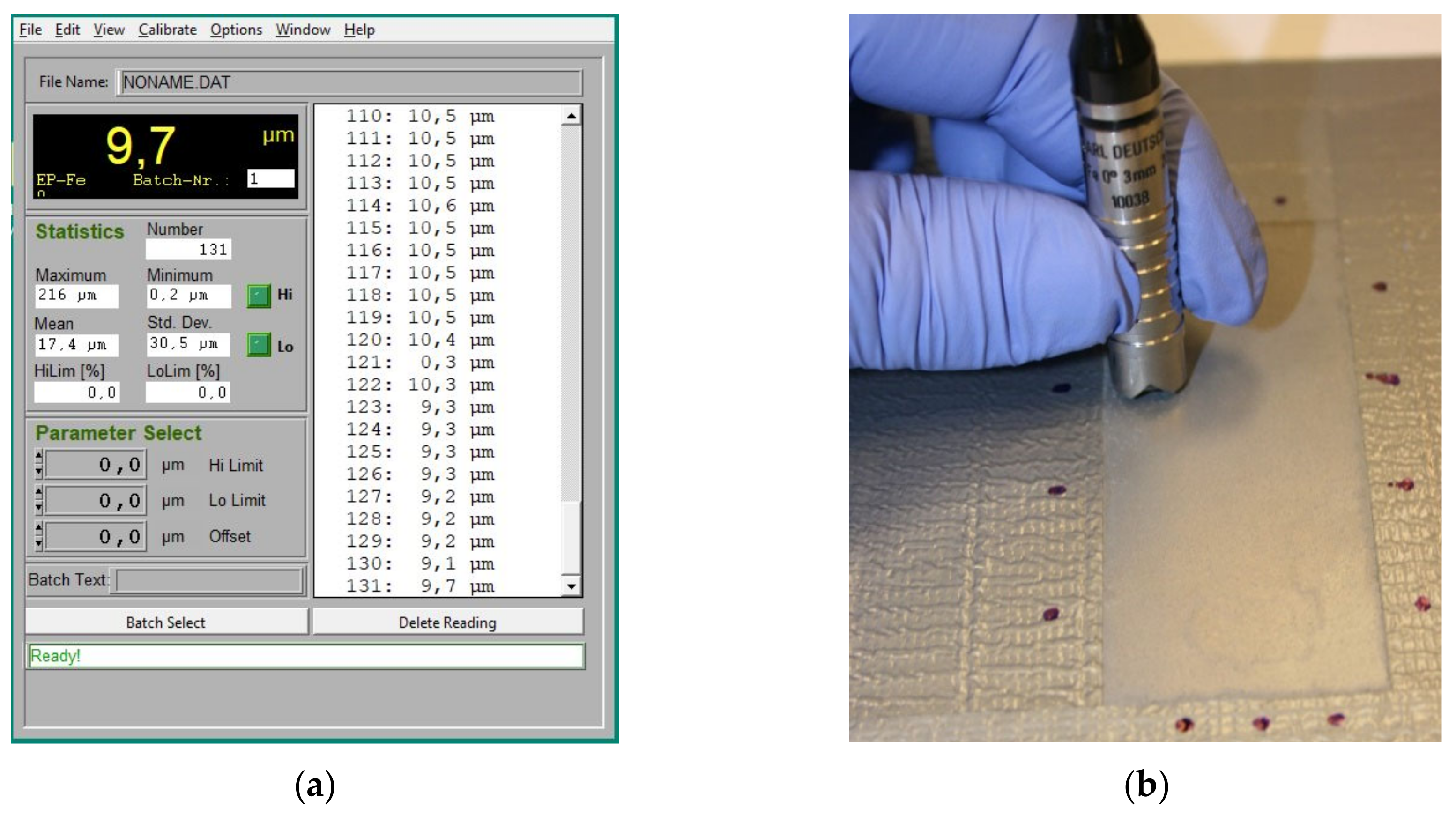

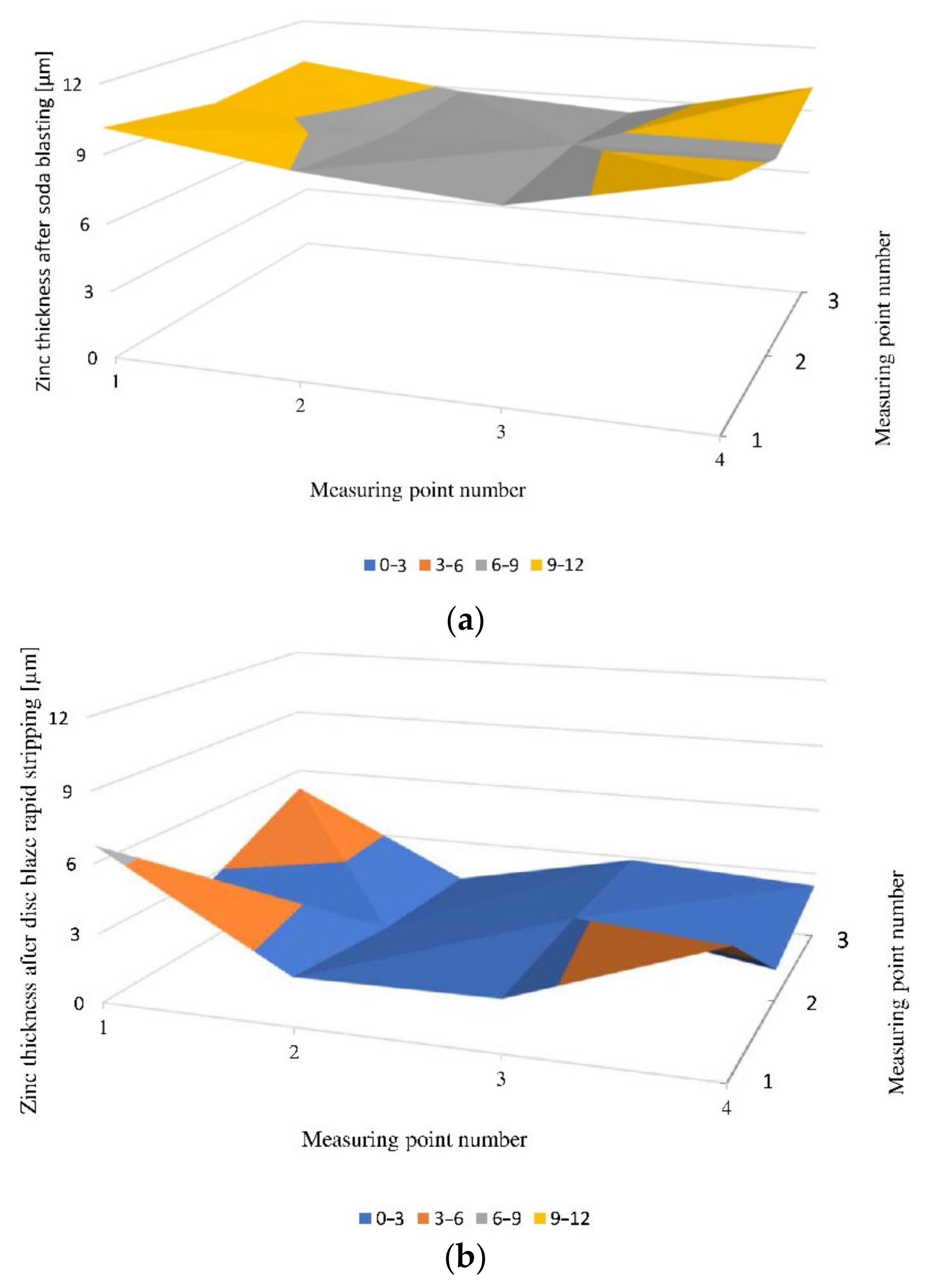
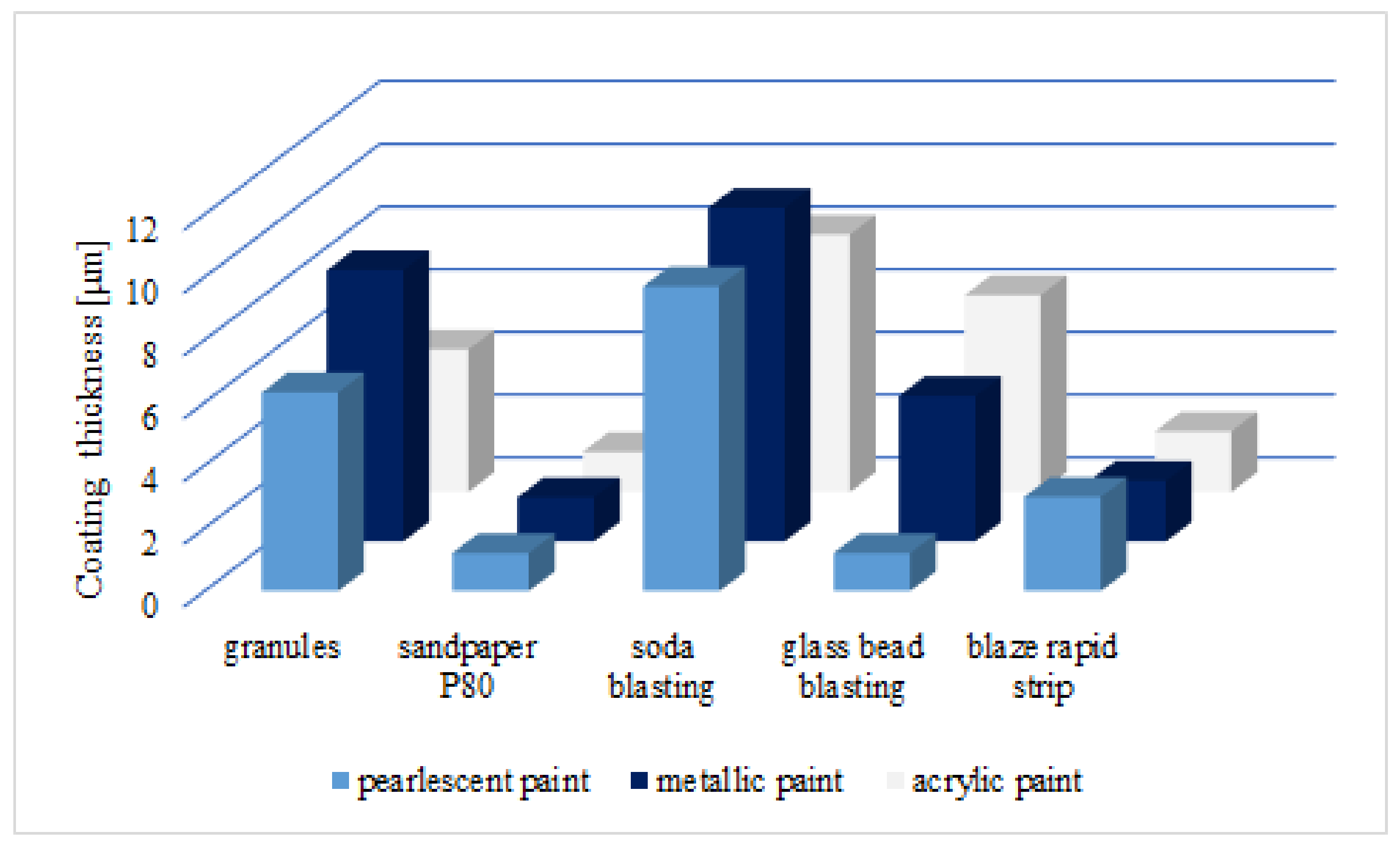
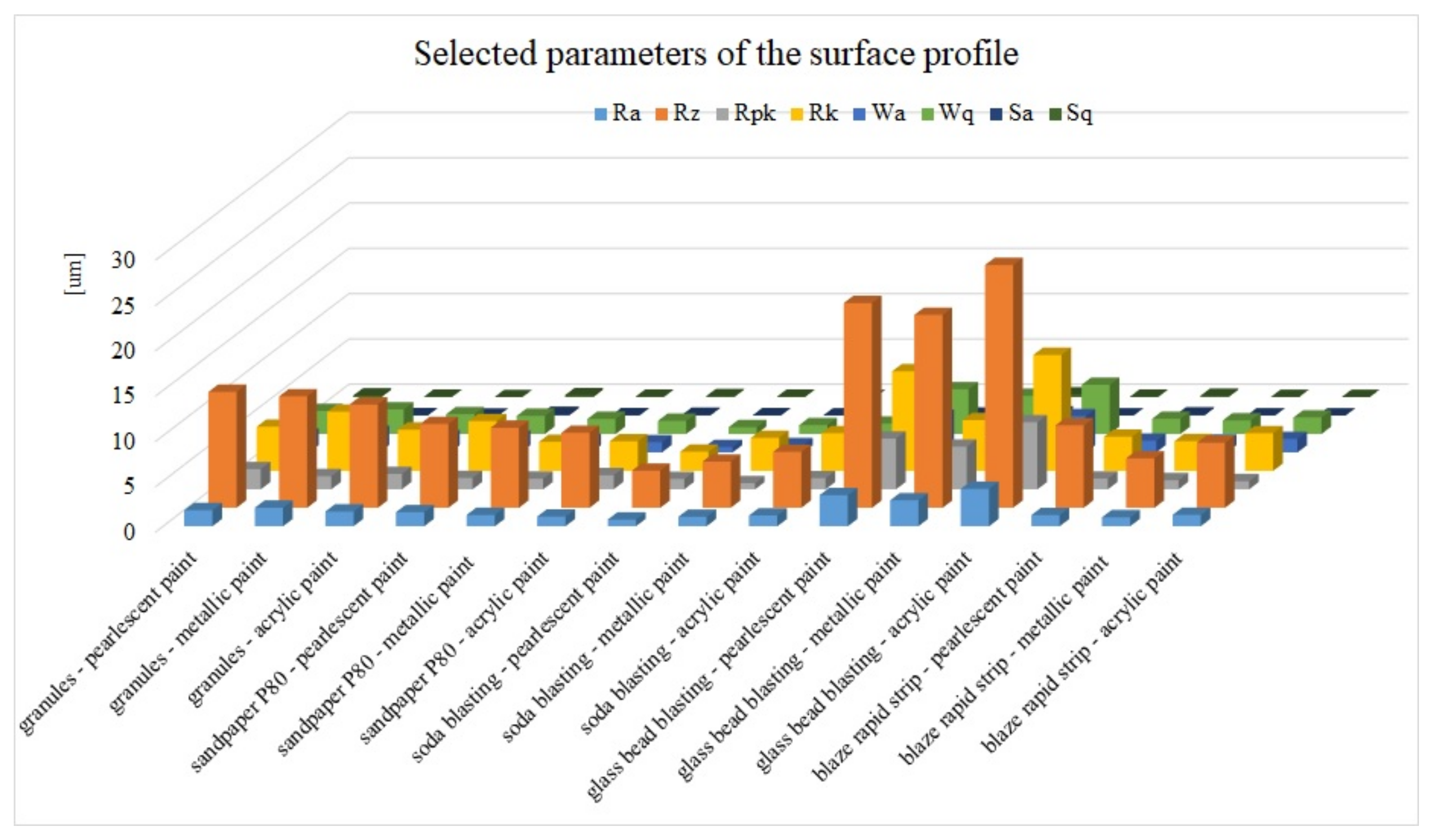
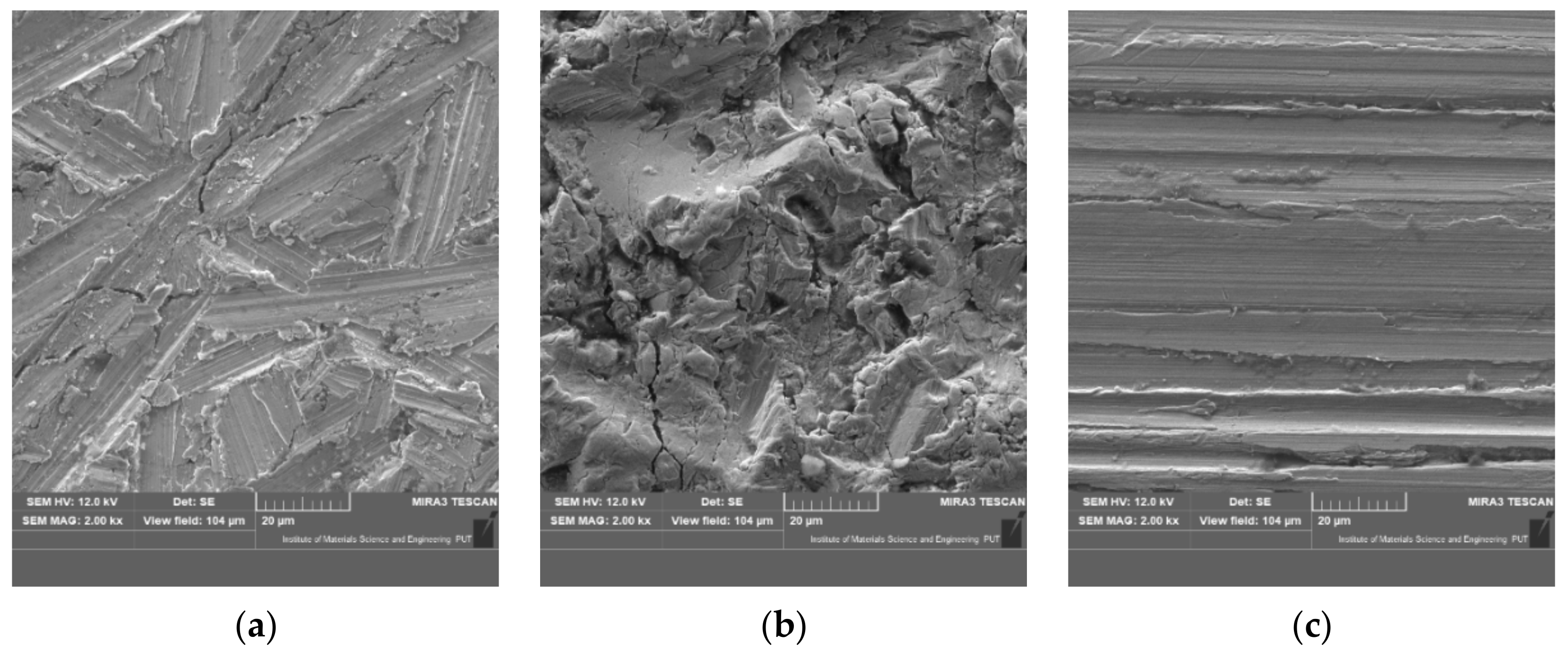

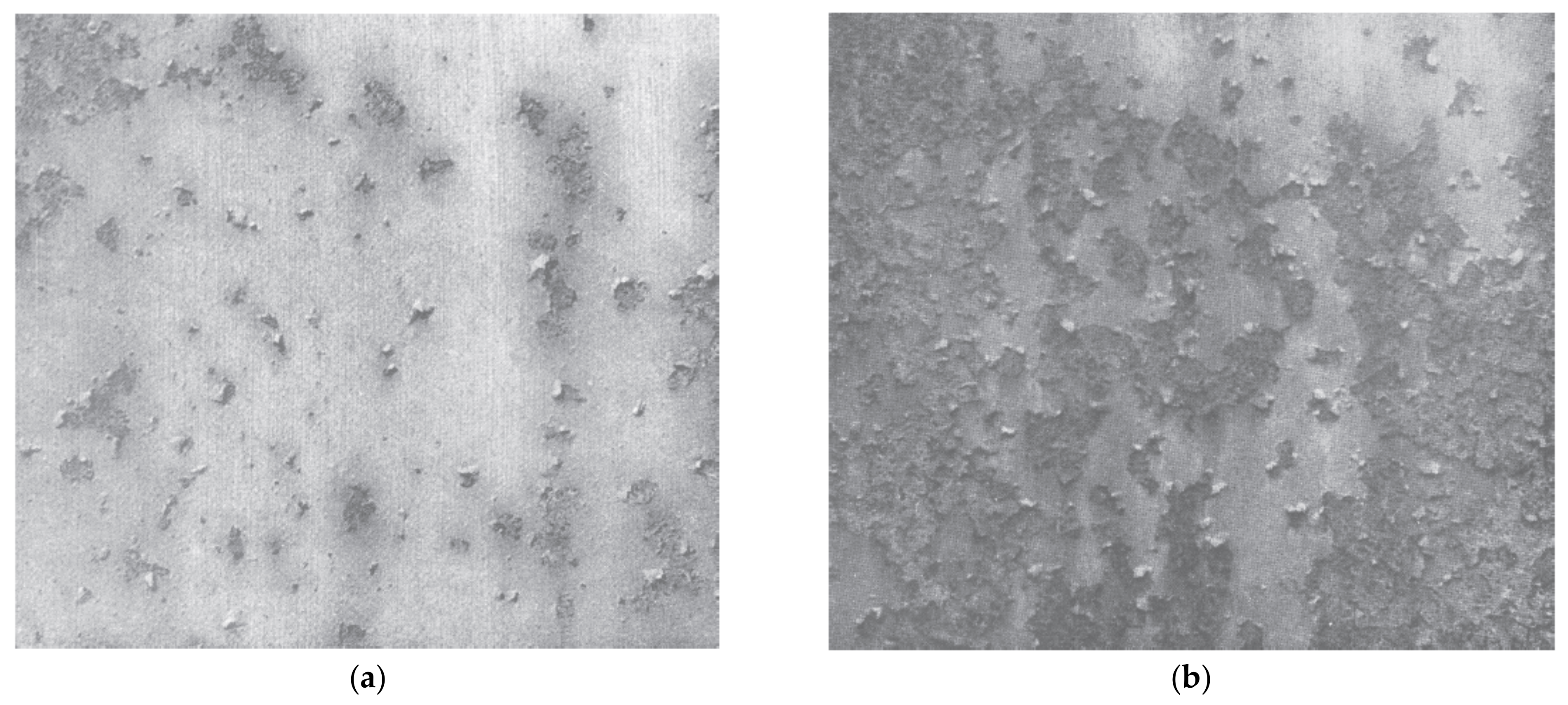
| Varnish Removal Method | Elementary Substances | Acrylic Paint | Metallic Paint | Pearlescent Paint |
|---|---|---|---|---|
| Granules | Zn | 78.7 | 70.2 | 77.0 |
| O | 6.7 | 4.2 | 4.9 | |
| Na | 3.8 | 2.0 | 2.5 | |
| Fe | 9.2 | 22.6 | 14.3 | |
| Al | 0.9 | 0.6 | 0.7 | |
| other | 0.7 | 0.4 | 0.6 | |
| Sandpaper P80 | Zn | 0.6 | 0.6 | 0.9 |
| O | 2.6 | 4.0 | 2.0 | |
| Na | 0.2 | 2.5 | 0.1 | |
| Fe | 95.4 | 92.1 | 96.5 | |
| Al | 0.2 | 0.4 | 0.1 | |
| other | 1.0 | 0.4 | 0.4 | |
| Soda blasting | Zn | 64.5 | 58.7 | 64.2 |
| O | 15.7 | 20.0 | 16.1 | |
| Na | 10.8 | 14.2 | 11.6 | |
| Fe | 7.4 | 6.1 | 7.0 | |
| Al | 0.9 | 0.6 | 0.8 | |
| other | 0.7 | 0.4 | 0.3 | |
| Glass bead blasting | Zn | 7.8 | 18.3 | 5.7 |
| O | 6.0 | 4.8 | 5.9 | |
| Na | 2.2 | 2.0 | 1.9 | |
| Fe | 79.0 | 71.4 | 81.3 | |
| Al | 0.3 | 0.3 | 0.3 | |
| other | 4.6 | 3.2 | 4.9 | |
| Blaze rapid strip | Zn | 47.7 | 0.7 | 1.9 |
| O | 2.3 | 1.4 | 2.3 | |
| Na | 2.0 | 0.1 | 0.4 | |
| Fe | 47.6 | 97.5 | 94.9 | |
| Al | 0.2 | 0.1 | 0.2 | |
| other | 0.2 | 0.2 | 0.5 |
| Varnish Removal Method | Acrylic Paint | Metallic Paint | Pearlescent Paint |
|---|---|---|---|
| Granules | 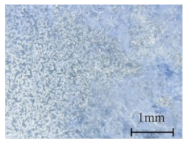 | 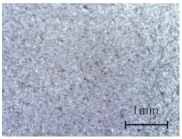 |  |
| Sandpaper P80 | 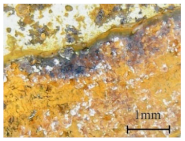 | 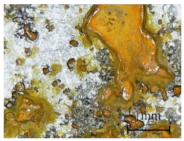 | 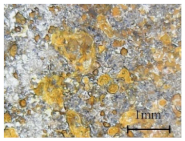 |
| Soda blasting | 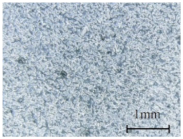 |  | 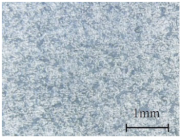 |
| Glass bead blasting | 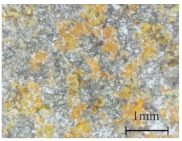 |  |  |
| Blaze rapid strip | 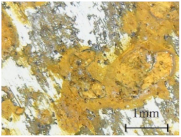 | 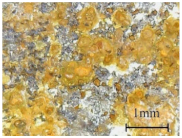 | 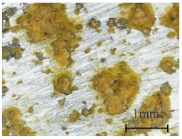 |
| Varnish Removal Method | Acrylic Paint | Metallic Paint | Pearlescent Paint |
|---|---|---|---|
| Granules | not found | not found | not found |
| Sandpaper P80 | 50.5 | 39.1 | 25.1 |
| Soda blasting | not found | not found | not found |
| Glass bead blasting | 20.5 | 27.5 | 33.4 |
| Blaze rapid strip | 40.0 | 44.8 | 35.5 |
Publisher’s Note: MDPI stays neutral with regard to jurisdictional claims in published maps and institutional affiliations. |
© 2021 by the authors. Licensee MDPI, Basel, Switzerland. This article is an open access article distributed under the terms and conditions of the Creative Commons Attribution (CC BY) license (http://creativecommons.org/licenses/by/4.0/).
Share and Cite
Ulbrich, D.; Kowalczyk, J.; Stachowiak, A.; Sawczuk, W.; Selech, J. The Influence of Surface Preparation of the Steel during the Renovation of the Car Body on Its Corrosion Resistance. Coatings 2021, 11, 384. https://doi.org/10.3390/coatings11040384
Ulbrich D, Kowalczyk J, Stachowiak A, Sawczuk W, Selech J. The Influence of Surface Preparation of the Steel during the Renovation of the Car Body on Its Corrosion Resistance. Coatings. 2021; 11(4):384. https://doi.org/10.3390/coatings11040384
Chicago/Turabian StyleUlbrich, Dariusz, Jakub Kowalczyk, Arkadiusz Stachowiak, Wojciech Sawczuk, and Jaroslaw Selech. 2021. "The Influence of Surface Preparation of the Steel during the Renovation of the Car Body on Its Corrosion Resistance" Coatings 11, no. 4: 384. https://doi.org/10.3390/coatings11040384






